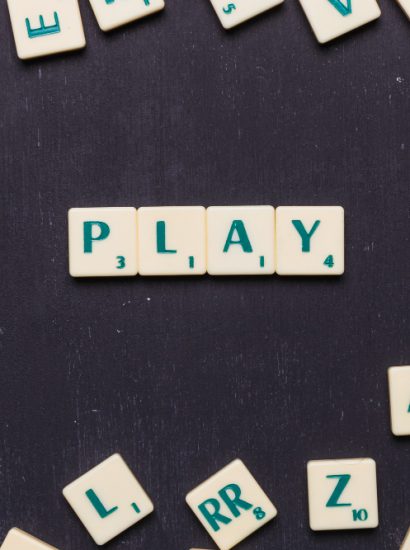In today’s fast-paced world, finding a moment of peace can feel impossible. Life’s demands often leave us feeling overwhelmed, reactive, and disconnected from ourselves. But there’s a simple, transformative approach that can bring clarity and calm: Learn to Sit Back and Observe. By mastering this practice, you create space for reflection, understanding, and inner peace. Observation allows you to step back, detach from chaos, and view life with a broader perspective. This article delves into 10 life-changing lessons you’ll uncover when you embrace the art of sitting back and observing.
Embrace Stillness to Find Clarity
In the rush of daily life, stillness is a luxury many overlook. When you pause and observe, you allow your mind to clear. This stillness helps identify what truly matters, guiding you toward meaningful decisions and reducing unnecessary noise. Meditation, mindful breathing, or simply taking a few moments each day to sit in silence can create space for clarity to emerge.
Detachment is Key to Understanding
“Learn to Sit Back and Observe” teaches us the value of detachment. By stepping back emotionally, we see situations for what they are rather than how they make us feel. This perspective prevents hasty decisions fueled by anger or fear and instead fosters wisdom and understanding. Detachment doesn’t mean you stop caring; it means you approach life with balance and rationality.
Develop Patience as a Superpower
Observation requires patience, a virtue often undervalued in our fast-paced society. When you learn to sit back and observe, you practice waiting for the right moment instead of rushing into action. Patience empowers you to navigate challenges with grace and builds resilience against life’s inevitable ups and downs.
Listen More, Speak Less
Listening is a cornerstone of observation. Many people listen only to respond, not to understand. By consciously sitting back and truly hearing others, you uncover deeper connections and insights. This habit also minimizes misunderstandings and strengthens your relationships.
Master Emotional Intelligence
“Learn to Sit Back and Observe” includes tuning into your emotions without letting them control you. Observing how feelings arise and dissipate builds emotional intelligence, helping you respond thoughtfully rather than reacting impulsively. Recognizing patterns in your emotional landscape leads to a calmer, more balanced state of mind.
Nature as a Teacher
Nature provides countless lessons for those who observe it. Watching the seasons change, a stream flow, or a tree grow reminds us of the beauty in patience and persistence. Spend time in nature, and you’ll find inspiration and tranquility that rejuvenates your soul and aligns you with the rhythms of life.
Perspective Shifts When You Learn to Sit Back and Observe
The act of observation reveals how perspective shapes reality. Two people can experience the same event but interpret it differently based on their viewpoints. When you Learn to Sit Back and Observe, you notice these differences and gain insight into your biases. Shifting your perspective can help you tackle problems creatively and view life with optimism.
Non-Reaction as Part of Learn to Sit Back and Observe
Reacting impulsively can escalate conflicts and lead to regret. When you Learn to Sit Back and Observe, you practice the art of non-reaction. This doesn’t mean passivity; instead, it’s about pausing, assessing the situation, and responding mindfully. Non-reaction is a powerful tool for maintaining harmony and ensuring your actions align with your values.
The Present Moment: A Gift When You Learn to Sit Back and Observe
Observation anchors you in the present moment. Many people are consumed by worries about the future or regrets about the past, but when you Learn to Sit Back and Observe, you focus on the now. This practice enriches your experiences and fosters gratitude. The present is where life truly happens, and observation keeps you grounded in it.
Reflection Helps You Learn to Sit Back and Observe and Grow
Growth stems from self-reflection. When you Learn to Sit Back and Observe your actions, thoughts, and habits, you uncover areas for improvement and celebrate your progress. Every experience, whether joyful or challenging, becomes a lesson that contributes to your personal development. Observation transforms life into a continuous journey of growth.
Conclusion
The journey to inner peace begins with the choice to “Learn to Sit Back and Observe.” This mindful approach helps you embrace stillness, cultivate patience, and respond to life with wisdom. By incorporating these 10 lessons, you’ll not only transform your perspective but also build a foundation for lasting peace and resilience. Start today, and watch as your world begins to change.
FAQs
Q1. Why is observation important for inner peace?
Observation creates space for clarity and understanding, helping you respond calmly to challenges instead of reacting impulsively. It fosters mindfulness and emotional intelligence, both essential for inner peace.
Q2. How can I start learning to sit back and observe?
Begin with small practices like mindful breathing, journaling, or spending time in nature. Dedicate a few minutes daily to pause, observe, and reflect on your thoughts and surroundings.
Q3. Can detachment make me feel disconnected from others?
Detachment doesn’t mean disconnection. It allows you to engage with others from a place of balance and understanding rather than emotional reactivity, strengthening your relationships.
Q4. What role does patience play in observation?
Patience allows you to wait for clarity and the right opportunities instead of acting hastily. It’s a critical component of observation that builds resilience and helps you stay grounded during challenges.
Q5. How does observing nature contribute to inner peace?
Nature’s rhythms remind us of life’s simplicity and beauty. Watching how it adapts and thrives can inspire tranquility and help you align with the present moment.
Also read: Boston Celtics vs Miami Heat Stats: 10 Jaw-Dropping Records You Need to Know









